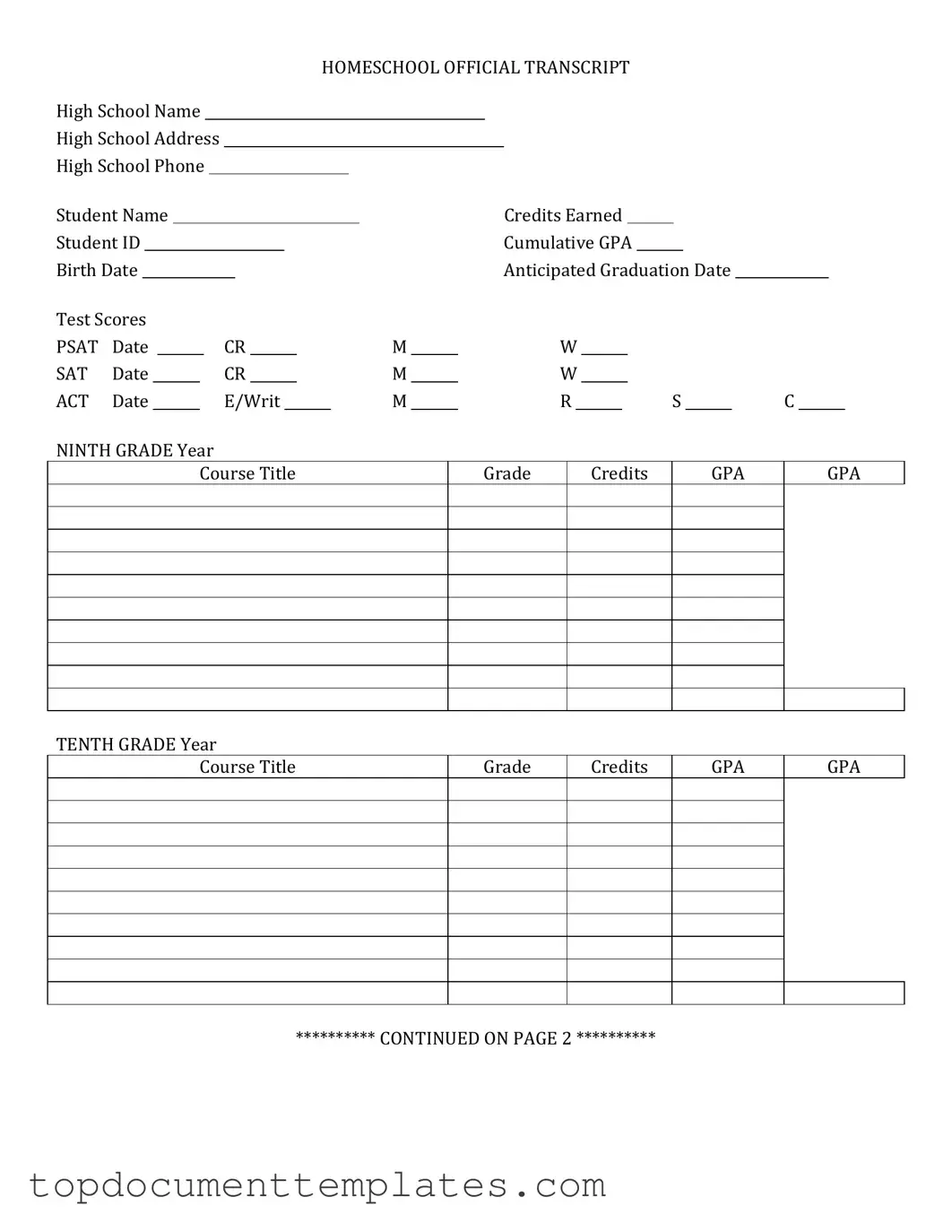Blank High School Transcript PDF Form
The High School Transcript form is an official document that provides a comprehensive record of a student's academic achievements throughout their high school years. It typically includes details such as courses taken, grades received, and overall GPA. Understanding how to properly fill out this form is crucial for students applying to colleges or seeking employment opportunities.
Ready to get started? Click the button below to fill out the form!
Open This Form
